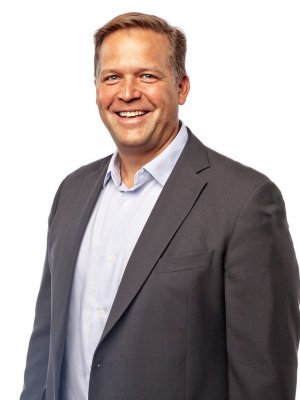
Financial Planning in 2021
Financial planning is not just for the wealthy. Creating a roadmap for your financial future is for everyone. In reality, financial planning is a path to building wealth.
Better financial understanding can be achieved when measurable financial goals are set, the effects of decisions understood, and results reviewed. Giving you a whole new approach to your budget and improving control over your financial lifestyle.
Defining Your Financial Goals
Financial planning is the process of determining your financial goals, such as what do you want to use your money for and when you'll need to use it, and then laying out a plan of action with specific steps you need to take to achieve those goals.
When I help my clients create a financial plan, I encourage them to begin by writing down their financial goals and ask them why money is important to them. I ask them why these goals are important to them. For example, owning a home is a common goal for many of my younger clients. What does home ownership mean to them? For many, it's having a space to grow and raise their families.
When it comes to setting goals, you want to make sure your goals are well defined and prioritized accordingly.
Direct Your Money Toward Your Goals
Get a sense of your monthly cash flow — what's coming in and what's going out. An accurate picture is key to creating a financial plan, and can reveal ways to direct more to savings or debt pay-down. Seeing where your money goes can help you develop immediate, medium-term and long-term plans.
A high priority in any financial plan is saving for your retirement. It may seem premature, especially if you are young; however, investing in your retirement early allows you to build the nest egg you'll need to continue to pursue your interests and support a lifestyle that aligns with your values.
I tell my clients a good rule of thumb is to save 15-20 percent of their gross income for retirement. For example, a family making $100,000 of gross income each year should be saving $15,000 per year or $1,250 per month. This savings can be in the form of employer sponsored plans like 401(k)s and 403(b) as well as Roth IRAs and Traditional IRAs. Often new investors need to start at a lower contribution and work our way up, that's fine. However, if you have an employer-sponsored 401(k) retirement plan, aim to contribute at least enough to grab the match, then bump up the percent you contribute by 1% or 2% each year. Whether the employer match is small or large, it amounts to free money.
Because you cannot always count on your employer match, don't consider it toward your 20 percent retirement savings goal. In fact, recently some employers chose to reduce or eliminate their matches instead of laying off employees due to reduced earnings during the pandemic.
Some people like to have a detailed budget, but if you follow the 80/20 rule---live on 80 percent of your income and save 20 percent, you'll have the same results.
Prepare for Emergencies
Along with saving for retirement, if you are just starting out you'll also want to have at least $1,000 set aside for unexpected expenses. You can start small — $500 is enough to cover small emergencies and repairs so that an unexpected bill doesn't run up credit card debt. Your emergency savings goals should increase quickly. For example, after saving $1,000, your next goal could be to save one month's basic living expenses, and so on.
Pay Down High Interest Debt
Not all debt is bad. In some cases, it may be better to save than pay off debt.
Pay attention to the interest rates on your debt. If you have high interest consumer debt (over 8% interest), it may be best to tackle that before anything else.
Begin making extra payments to pay down the debt with the highest interest rate. Once you paid that one off, tackle the debt with the next highest interest rate until you have retired all your high interest debt.
After you pay down your high interest debt, redirect the extra cash to your emergency fund. A healthy emergency fund can help you avoid racking up high interest debt.
Build a Moat to Protect your Financial Well-being
Every financial plan rests on the ability to earn an income. Yet, an untimely death, disabling injury or sickness can upend your ability to earn an income. Make sure you have enough life and disability insurance. Use insurance to protect your financial stability, so a death or illness doesn't derail your family's financial welfare.
Life and disability insurance protect your loved ones who depend on your income. Long-term care insurance protects your retirement income in the event that you or your spouse needs care in a long-term care facility. Life expectancies are longer; however, this can also result in increased stays in long-term care facilities and the need for at-home care.
Putting It All Together
Working with a professional to create or update a financial plan can help you get started and stay on track. They can help you consider your cash flow, asset protection, education and retirement needs, and major purchases. They can also provide ongoing investment advice and recommendations for assets based on your values, needs, and objectives.
Ready to get started creating or updating your financial plan? Let's connect!
Separate from the financial plan and our role as financial planner, we may recommend the purchase of specific investment or insurance products or accounts. These product recommendations are not part of the financial plan and you are under no obligation to follow them.
About the Author
Matt Urbanski, Financial Advisor/Owner
Matt Urbanski, a nearly lifelong resident of South Bend, joined Healy Group in 2001 and became an owner in 2016.
He enjoys working with young business professionals, academics, and business owners. His areas of expertise include: asset protection in the areas of disability and life insurance; funding strategies for college, retirement plan options, and other tax-deferred savings programs.
No. 3421631 DOFU 01/2021


